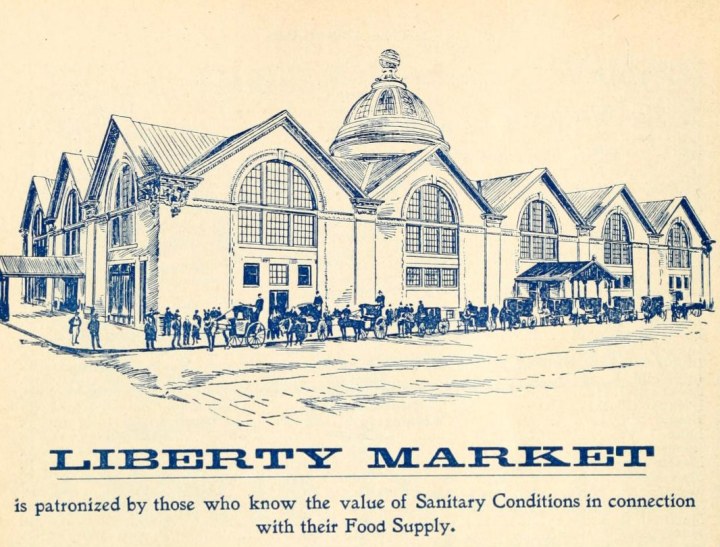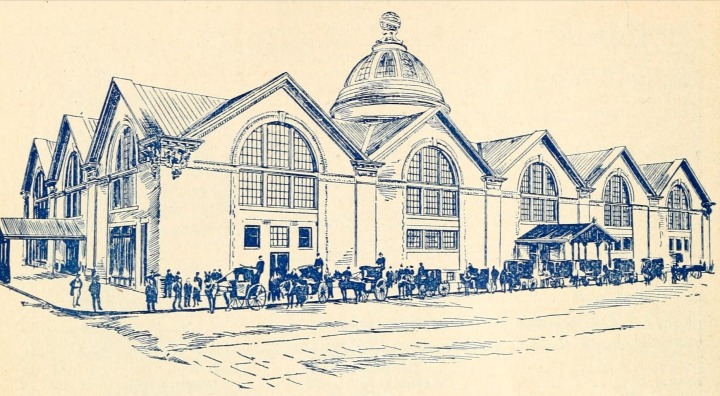A whole issue of the Architectural Record in 1911 is devoted to “The Building of Pittsburgh.” It is a treasury of information on many of the splendid buildings still standing here, as well as a few that have vanished.
-
The Building of Pittsburgh
-
Old St. Luke’s
-
Woodville Plantation

Under layers of later accretions is a Revolution-era house that belonged to the Neville family. When General Neville, an old Washington crony, was appointed collector of the Washington administration’s very unpopular whiskey tax in 1794, the Whiskey Rebellion broke out: rioters burned Bower Hill, General Neville’s home, and he fled for his life to this house, which belonged to his son.
This was a southern gentleman’s house: the Nevilles were from Virginia, and settled here in Yohogania County when Virginia claimed this part of the world. They kept slaves in the 1700s; Pennsylvania abolished slavery in stages.
The house has been lovingly restored and is now a museum open Sunday afternoons. Inside, among many treasures, is an original 1815 Clementi pianoforte, bought for the house in 2006.


-
The Great Floyd Gun, Cast at the Fort Pitt Foundry, Pittsburgh
From Frank Leslie’s Illustrated Newspaper, February 25, 1860. —Knapp, Rudd, & Co. cast this thing, which was considered one of the wonders of the age.
-
Old St. Luke’s
This colonial-era congregation in what is now Scott Township found itself at the center of the Whiskey Rebellion, which began when General John Neville, a church member and an old pal of President Washington’s, was appointed tax collector. The current stone building was put up in 1852, but the congregation was founded in 1765.
-
Brewer’s Block, Fifth Avenue
This imposing (for 1860) edifice seems to have stood at the lower end of Fifth Avenue. From a Directory of Pittsburg and Allegheny Cities for 1860-1861.
-
Pittsburgh in 1860
 Advertising William Schuchman’s lithography, from a Directory of Pittsburg and Allegheny Cities for 1860-1861.
Advertising William Schuchman’s lithography, from a Directory of Pittsburg and Allegheny Cities for 1860-1861. -
Washington Crossing the Allegheny, 1753

From American Scenery, 1854 (almost exactly a century after the event depicted here). —Young Washington’s raft capsized on the way over, and he nearly drowned. He could have just used the Fortieth Street Bridge, but George had to do everything the hard way.
-
Hotel Schenley
From the Pittsburgh and Allegheny Blue Book, 1899-1900. This building is now the William Pitt Student Union, having been absorbed, like much of the rest of Oakland, into the University of Pittsburgh.
-
Liberty Market
From the Pittsburgh and Allegheny Blue Book, 1899-1900. The Liberty Market was brand new when this ad ran. It failed as a retail market, but soon began a long association with the automobile industry that left it with the name Motor Square Garden. In 1988 it was redeveloped as a shopping arcade; once again, it failed as a retail space, and now it is known to most Pittsburghers as the headquarters of the local AAA affiliate. The building, currently having some restoration work done, looks almost exactly the same now as it did in 1900.
For those who wish to appreciate the details of the carriage trade lining up in front of the building, old Pa Pitt has provided an enlargement of the picture from the advertisement (click on it to make it very much bigger).








